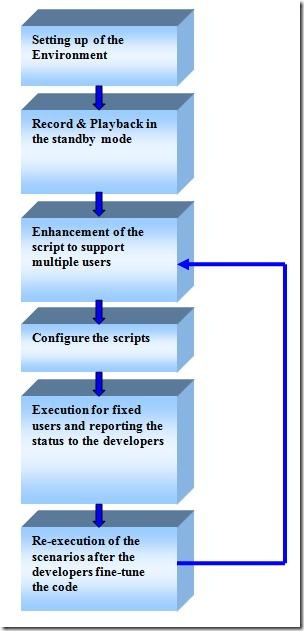Uncategorized
Building trust may seem mysterious—something that just happens or grows through some unknowable process. The good news is there are concrete actions that tend to build trust (and concrete actions that are almost guaranteed to break down trust).
First, let’s agree on a definition of trust in the workplace. We all know that trust is the foundation for teamwork. But to hear some people talk about it, you’d think team members were getting married, not creating software together. What we need in the workplace is professional trust. Professional trust says, “I trust that you are competent to do the work, that you’ll share relevant information, and that you have good intentions towards the team.” Taken broadly, that’s trust about communication, commitment, and competence.
Click here to read the complete article.
[About Author – Esther works with individuals, teams, and managers to improve their ability to deliver valuable software. Esther is recognized as a leader in the human-side of software development, including management, systems-thinking, organizational change, collaboration, team building, facilitation and retrospectives. She is the co-author of top rated book Agile Retrospectives: Making Good Teams Great.]

Uncategorized
On Readers Request, we are starting the series of “
Dummies Guide to Performance Testing”. This is the first post, where we will go through the basics of Performance Testing:
What is Performance Testing?
Why Performance Testing?
Tests carried out in Performance Testing
When to start Performance Testing?
Performance Test Process
What is Performance Testing?
Primary objective of the performance testing is “to demonstrate the system works functionally as per specifications with in given response time on a production sized database
Why Performance Testing?
– To assess the system capacity for growth
The load and response data gained from the tests can be used to validate the capacity planning model and assist decision making.
– To identify weak points in the architecture
The controlled load can be increased to extreme levels to stress the architecture and break it bottlenecks and weak components can be fixed or replaced
– To detect obscure bugs in software
Tests executed for extended periods can cause failures caused by memory leaks and reveal obscure contention problems or conflicts
– To tune the system
Repeat runs of tests can be performed to verify that tuning activities are having the desired effect – improving performance.
– To verify resilience & reliability
Executing tests at production loads for extended periods is the only way to access the systems resilience and reliability to ensure required service levels are likely to be met.
Tests carried out in Performance Testing:
1. Performance-Tests: Used to test each part of the web application to find out what parts of the website are slow and how we can make them faster.
2. Load-Tests: This type of test is done to test the website using the load that the customer expects to have on his site. This is something like a “real world test” of the website.
- First we have to define the maximum request times we want the customers to experience, this is done from the business and usability point of view, not from a technical point of view. At this point we need to calculate the impact of a slow website on the company sales and support costs.
- Then we have to calculate the anticipated load and load pattern for the website (Refer Annexure I for details on load calculation) which we then simulate using the Tool.
- At the end we compare the test results with the requests times we wanted to achieve.
3. Stress-Tests:
- They simulate brute force attacks with excessive load on the web server. In the real world situations like this can be created by a massive spike of users – far above the normal usage – e.g. caused by a large referrer (imagine the website being mentioned on national TV…). The goals of stress tests are to learn under what load the server generates errors, whether it will come back online after such a massive spike at all or crash and when it will come back online.
When to start Performance Testing?
- It is even a good idea to start performance testing before a line of code is written at all! Early testing the base technology (network, load balancer, application-, database- and web-servers) for the load levels can save a lot of money when you can already discover at this moment that your hardware is to slow. Also the first stress tests can be a good idea at this point.
- The costs for correcting a performance problem rise steeply from the start of development until the website goes productive and can be unbelievable high for a website already online.
- As soon as several web pages are working the first load tests should be conducted and from there on should be part of the regular testing routine each day or week or for each build of the software.
Generic Performance Test Process
This is a general process for performance Testing. This process can be customized according to the project needs. Few more process steps can be added to the existing process, deleting any of the steps from the existing process may result in Incomplete process. If Client is using any of the tools, In this case one can blindly follow the respective process demonstrated by the tool.
We will go through the each box in upcoming posts.
Uncategorized
Test progress monitoringThe purpose of test monitoring is to give feedback and visibility about test activities. Information to be monitored may be collected manually or automatically and may be used to measure exit criteria, such as coverage. Metrics may also be used to assess progress against the planned schedule and budget.
Common test metrics include:
- Percentage of work done in test case preparation (or percentage of planned test cases prepared).
- Percentage of work done in test environment preparation.
- Test case execution (e.g. number of test cases run/not run, and test cases passed/failed).
- Defect information (e.g. defect density, defects found and fixed, failure rate, and retest results).
- Test coverage of requirements, risks or code.
- Subjective confidence of testers in the product.
- Dates of test milestones.
- Testing costs, including the cost compared to the benefit of finding the next defect or to run the next test.
Test Reporting
Test reporting is concerned with summarizing information about the testing endeavour, including:
- What happened during a period of testing, such as dates when exit criteria were met.
- Analyzed information and metrics to support recommendations and decisions about future actions, such as an assessment of defects remaining, the economic benefit of continued testing, outstanding risks, and the level of confidence in tested software.The outline of a test summary report is given in ‘Standard for Software Test Documentation’ (IEEE 829).
Metrics should be collected during and at the end of a test level in order to assess:
- The adequacy of the test objectives for that test level.
- The adequacy of the test approaches taken.
- The effectiveness of the testing with respect to its objectives.
Test control
Test control describes any guiding or corrective actions taken as a result of information and metrics gathered and reported. Actions may cover any test activity and may affect any other software life cycle activity or task.
Examples of test control actions are:
- Making decisions based on information from test monitoring.
- Re-prioritize tests when an identified risk occurs (e.g. software delivered late).
- Change the test schedule due to availability of a test environment.
- Set an entry criterion requiring fixes to have been retested (confirmation tested) by a developerbefore accepting them into a build.

Uncategorized
Dear Readers,
Finally we launched our blog application on facebook :). This application will help you track all the top stories, software testing tips and tutorials from the Software Testing Times right in your Facebook profile.
Link – http://www.facebook.com/apps/application.php?id=102868453194
All you need to click on “Like” and then click “Go to Application”. Application will be activated.
Direct Link is given above. Other way is to:
Login to facebook and Bookmark Software Testing Application by below bookmark button
This is just a start. It is very simple app and there might be some bugs in it. We will add more new features in the application and make the application user friendly.

Uncategorized
Exposing systems to the internet increases the risk that security weaknesses in those systems will be leveraged to compromise the system or the underlying data. It is therefore necessary to examine the actual business risks this brings, understand the basic difficulties in implementing “secure systems”, and adequately test internet applications for security, as well as functionality and load performance, before they are exposed to the net.
Click Here to Download the Whitepaper. ( via @ appLabs)
Security Testing Fundamentals –

Uncategorized
 Five Principles Needing to Test –
Five Principles Needing to Test –
1. Authentication: Identity – Validity
- Login, timeout, failures, pw changes, mins/maxs, stored encrypted, bypass captured URL, handling deletion of outdated, expirations, 2-factor:atm
- Unix:Access.conf, .htaccess, .nsconfig
- Windows: challenge/response; SSO; Passport
2. Integrity: protection from tampering/spoofing
3. Privacy: protection from eavesdropping
4. Non-Repudiation: accountability – digital sigs
5. Availability: RAID,clusters,cold standbys
Read More Here – http://www.softwaretestingtimes.com/2010/07/security-testing-fundamentals.html







Recent Comments